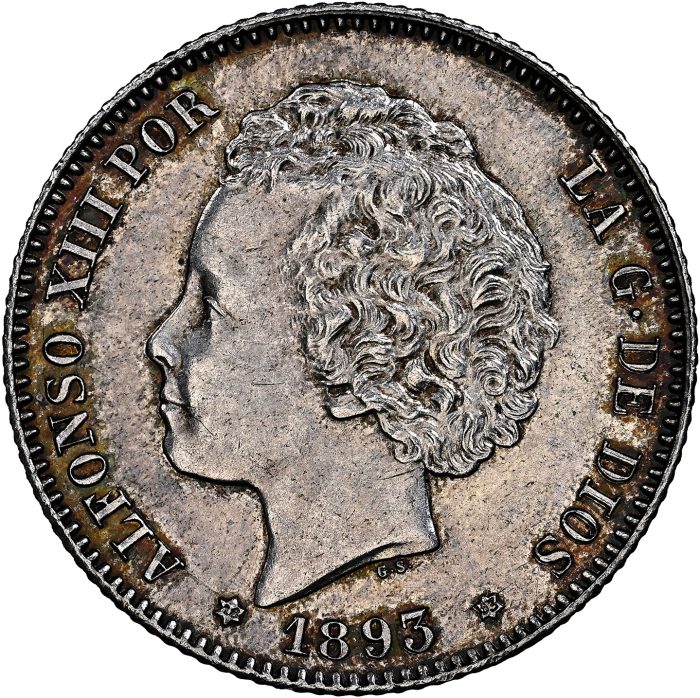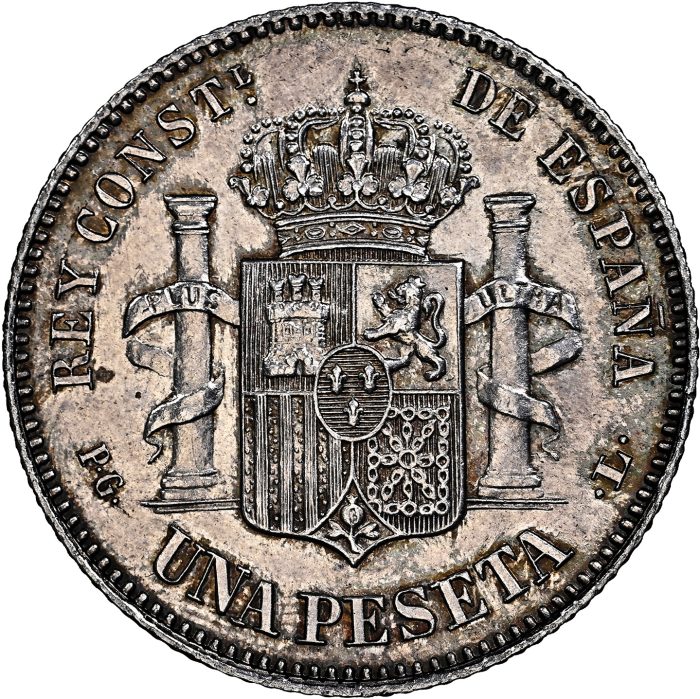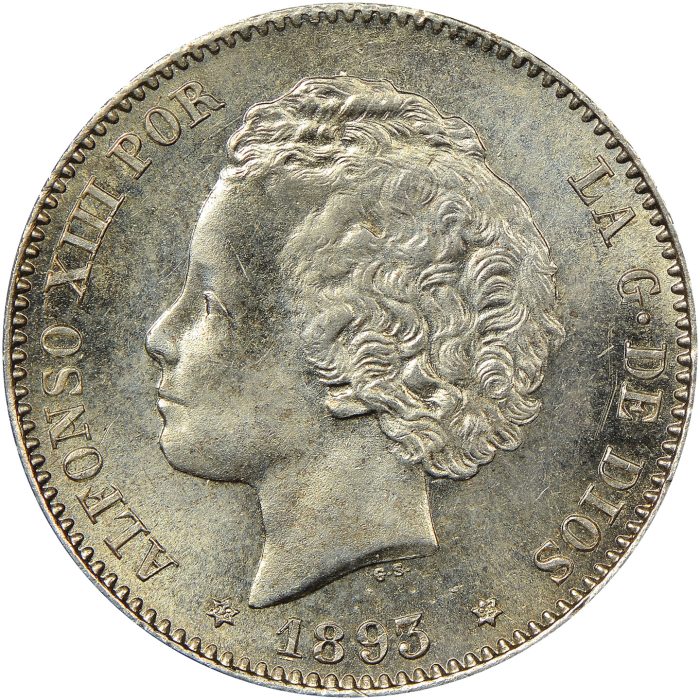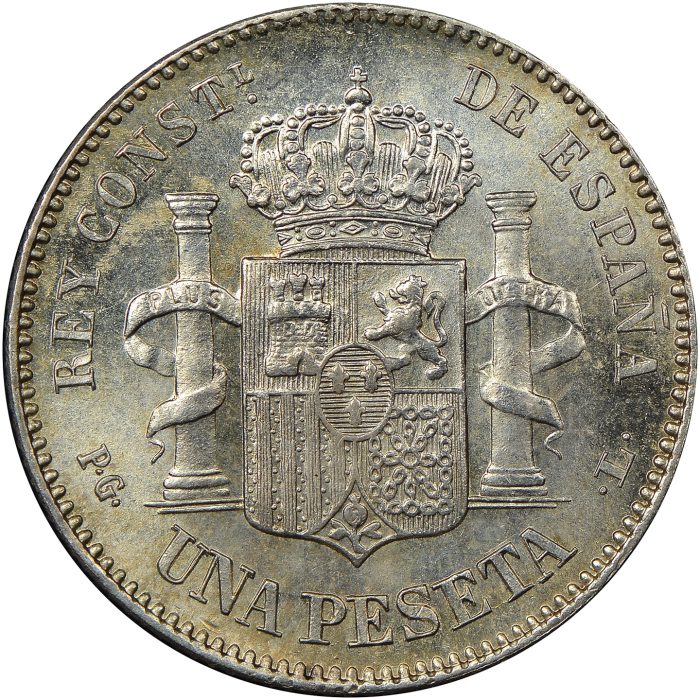1893 Spanish Peseta
Alfonso XIII was king of Spain from his birth in 1886 until he was forced into exile in 1931. Highlights of his reign include his success in keeping his country neutral during World War I and his humanitarian efforts during the conflict, which earned him a Nobel Peace Prize nomination.
From 1889 to 1905, the Spanish peseta cycled through four portraits of the young monarch as he grew from a small child to a young man. The second portrait was used only in 1893 and 1894, with the latter of these dates listed in the NGC World Coin Price Guide as more valuable. Still, the 1893 examples command several hundred dollars in low Mint State, making them a reasonably attractive target for counterfeiters.




Genuine examples of the 1893 peseta should weigh 5g and contain 0.835-fine silver. Numismatic Guaranty Company (NGC) recently received a purported example of this coin with the correct weight and metal content. However, not everything appears as it should, beginning with an odd surface texture.
The entire counterfeit shows a very even satin luster. It appears to have numerous marks, although these blend into the luster. Take the incuse line above the date, for example. This is a telling sign that those marks were present on the source coin and that this piece was struck from a transfer die. Die flaws, like the large raised blob above the date, are further evidence. These features are present on all fakes struck from these dies and are considered foolproof diagnostics.
This piece also displays weak details, which is another indication it’s a transfer-die fake. For example, the high points of the hair are flat but still show consistent luster with the rest of the coin. Authenticators refer to this tell-tale effect as “struck worn.” Lastly, the pomegranate at the bottom of the shield is indistinct and rendered mostly in outline only. Missing detail like this should always prompt additional investigation.
Transfer-die and other types of counterfeits threaten the integrity of the marketplace, but NGC graders have the expertise to identify them. NGC’s determinations of authenticity and grade are backed by the NGC Guarantee.
A version of this article appears in the March 2024 issue of The Numismatist (money.org).
